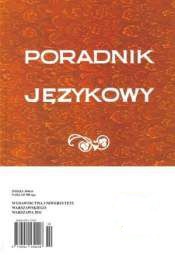JAKICH CZASOWNIKÓW RUCHU UŻYWAJĄ DZIECI W WIEKU PRZEDSZKOLNYM? SEMANTYKA I STRUKTURA GRAMATYCZNA CZASOWNIKÓW RUCHU
What Dynamic Verbs Are Used by Kindergarten Children? Semantics and Grammatical Structure of Dynamic Verbs
Author(s): Anna HukSubject(s): Language and Literature Studies
Published by: Dom Wydawniczy ELIPSA
Keywords: czasownik; dziecko; ruch; verb; child; dynamic
Summary/Abstract: Language acquisition is a popular trend in cognitive linguistics. The article raises the issue of dynamic verb acquisition by kindergarten children. The analysis is based on dynamic verbs used by children of that age. The material was gathered during casual conversations with children, as well as in the course of games arranged at Przemyśl kindergartens. Thus gathered verbs were semantically and grammatically analyzed and compared with the verbs from the children's book Wesoła szkoła sześciolatka (A Happy School of a Six- Year-Old). The research results show acquisition of eleven dynamic verbs (meaning: walk, go out, come back, fly, swim, sleep). The children are familiar with them, as they use them quite often in their talks, and they can also define their meanings. To explain them, the children frequently use gestures and faces. To explicate them, they usually use syntactic definitions, thus presenting positions opened by the verb in a syntagmatic chain. It proves the cognitivist assumption about contextual language acquisition and about constructions as basic acquisition units. The dynamic verbs mentioned by the children are concrete, successfully used in context, so they are well explained and perfectly understood.
Journal: Poradnik Językowy
- Issue Year: 2008
- Issue No: 01
- Page Range: 52-61
- Page Count: 10
- Language: Polish
- Content File-PDF

